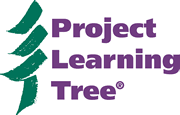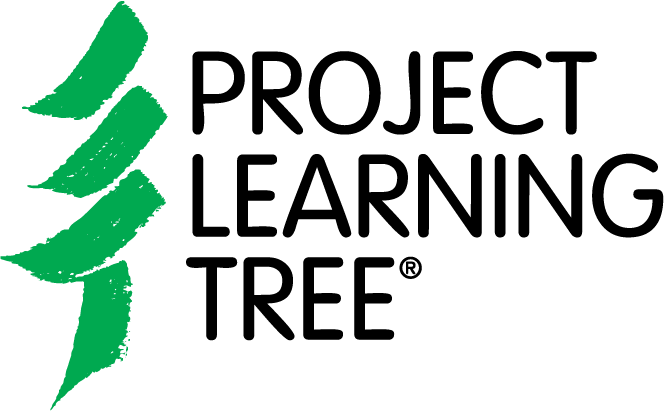-
Who Works in the Forest?
Watch these series of PLT Canada Green Jobs Videos to meet some amazing men and women who work in and care for our forests. Find out why their jobs are key to managing forests sustainably. Learn about the communities in which these professionals live and work, how society benefits from the work they do, and the various education and career pathways that led them to their unique green jobs. The series is hosted by Lacey Rose, a registered professional forester.
-
Indigenous Connections to PLT Activities
The Minnesota Department of Education includes Indigenous-based learning benchmarks in science, language arts, and social studies. Learn how the Minnesota DNR worked with tribes to adapt several PLT activities to include Ojibwe and Dakota culture and knowledge, and get some tips for teaching about Indigenous Peoples with knowledge and respect. Access the Ojibwe and Dakota PLT Lessons that connect students in grades K-8 to forests using Indigenous knowledge and perspectives.
-
Video: Logging Products
“Logging Products.” This 6:39-minute video provides an overview of the types of products that come from harvested trees, and offers an insight into the job of logger. It is one of a series of BeLeaf It or Not! videos by Michigan State University Extension, which are geared for students.
-
America’s Forests with Chuck Leavell: Wisconsin Northwoods
This full-length 26:17-minute video is an episode of the series America’s Forests with Chuck Leavell, hosted by Rolling Stones keyboard player and Georgia family tree farmer, Chuck Leavell. Following are approximate time stamps and possible connections to specific PLT activities:
- 2:00-7:07 – Overview of Wisconsin Forests. Chuck meets with a forester, and they talk about their personal connection to forests and how working forests can serve a variety of purposes, from wood products to recreation. Use with “If You Were the Boss” and “Our Federal Forests.”
- 7:20-11:42 – Chuck meets with young folks in the Job Corps, and we hear about the history of the Conservation Corps and about how many people find meaningful work in forests. Use with “My Green Future.”
- 12:00-18:40 – Chuck meets with a tree farmer who is interested in maximizing habitat for ruffed grouse. We also meet a lumber “jill” who participates in competitive timber sports and works with the tree farmer to cut a tree for grouse habitat. Use as a supplement to “Trees as Habitats” and “My Green Future.”
- 18:56-23:00 – Chuck meets with Marshall Pecore on the Menominee Indian Reservation, which has 200,000 acres of sustainably managed forests. Pecore describes how the Menominee believe that in terms of forest management, the forest is first before profit. For example, they cut the worst trees in the forest first, not the best trees, and look at forest management from a 7th generation perspective. Use with “If You Were the Boss” or “Our Federal Forests.”
-
Cool Jobs Video Series
Want to show your students how fun, interesting, and just downright cool being a scientist can be? Share with them this Cool Jobs video series that highlights what scientists do, how they do it, and how they got their jobs. There are 40 videos highlighting a variety of green careers including Biologist, Wildlife Conservationist, and Zoologist.
-
PLT’s 12 Green Job Fact Sheets
Learn more about the wide array of jobs related to forests with PLT’s 12 Green Jobs Fact Sheets, which highlights the following green jobs: Forester, Environmental Educator, GIS Specialist, Indigenous Relations Specialist, Forestry Technician, Park Ranger, Hydrologist, Silviculture Technician, Urban Forester, Machine Operator, Wildlife Biologist, and Sustainability Manager. Green jobs offer opportunities for people with diverse backgrounds, skills, interest areas, and personal qualities. Youth and adults alike might be surprised at the range of green career opportunities. These jobs help sustain forest ecosystems and ensure that forest products are produced in the most sustainable way possible also ensure that wildlife habitat is conserved, trees are replanted, and workers are treated fairly.
-
Native Land Digital
Curated and designed by an Indigenous-led team, Native Land Digital is a tool that maps Indigenous territories, treaties, and languages. Download The Land You Live On Education Guide for some exercises to increase students’ awareness of the history of the land around them, and for help with discussions about Indigenous history, geography, and the rich and diverse cultures that have evolved from the land. Learn how to connect with local Indigenous organizations and communities to engage in cross-cultural exchanges about the land we live on and the importance of Indigenous land acknowledgment. Please note, while it provides a general sense of an area, the map does not represent or intend to represent official or legal boundaries of any Indigenous nations. Use it to spur discussion on the topic and as a first step to pursue more research.
-
Natural Inquirer Scientist Cards
Explore more than 250 different Forest Service scientist and engineer career opportunities with the Natural Inquirer’s downloadable career cards, made in partnership with Cradle of Forestry in America Interpretive Association (CFAIA) and the US Forest Service. Available in both English and Spanish, career cards are available direct for download and will help youth explore the important characteristics of a scientist, with examples of research questions pursued by each profession, the common technology and equipment used in their research, and more!
-
Podcast Series: Learning About Green Careers
Learn more about the work of a tree conservation ecologist in this episode from the podcast series Planted: Finding your roots in STEM Careers. Dr. Silvia Alvarez-Clare works at The Morton Arboretum, located 25 miles west of Chicago. She collaborates with individuals and institutions all over the world to save the brandegee oak (Quercus brandegeei) from extinction. Dr. Alvarez-Clare talks about her career path and discovering her passion in tree conservation and shares how climate change is impacting tree life cycles
-
STEM Teaching Tools
The University of Washington’s Institute of Science and Math created Practice Briefs. These free articles highlight ways of working on specific issues that come up during STEM teaching. These briefs helps K-12 educators and administrators stay informed on teaching STEM issues, including STEM issues relating to teaching NGSS and implementing meaningful STEM learning. Each brief is separated into digestible sections and includes recommended actions for educators.
-
Profit and Loss Spreadsheet
Excel spreadsheet that calculates profit and loss of the 400-acre wood
-
Wilderness.net
Learn about wilderness history, the values and benefits of wilderness, and threats to wilderness at this website. This interagency repository of information about the more than 750 Bureau of Land Management, Fish and Wildlife Service, Forest Service, and National Park Service wilderness areas contains K-12 classroom resources. At the website, you will find webquests, quizzes, and links to wilderness programs, along with blogs, legislation, agency policies, scientific literature, and research.
-
National Public Lands Day (NPLD)
Held each fall, this day celebrates service and recreation on public lands. NPLD engages adult and youth volunteers to get outdoors and improve their lands, whether at the grandest national park or at an urban park in their neighborhood. The event also encourages volunteers to explore and enjoy America’s natural wonders through outdoor recreation. After working hard, volunteers can take a hike, a swim, a bicycle ride and get healthy in America’s backyard. Find more information or register for NPLD at www.publiclandsday.org.
-
National Park Service Podcasts
New NPS Podcasts show students what park scientists do and provide an inside look at some of the issues facing our national parks. Most appropriate for middle and high school students, teachers can use the clips to generate discussion about real-world problems in nature and how scientists and others work to solve them.
-
FAO’s Global Forest Resources Assessment
The Food and Agriculture Organization of the United Nations (FAO) has monitored the world’s forests at 5 to 10 year intervals since 1946. The State of the World’s Forests 2020–Forests, Biodiversity and People, examines the contributions of forests, and of the people who use and manage them, to the conservation and sustainable use of biodiversity. For the first time, this edition is a joint effort between two United Nations entities: FAO and the United Nations Environment Programme (UNEP).
In addition, this interactive report contains the main findings of the Global Forest Resources Assessment 2020 (FRA 2020). FRA 2020 examines the status of, and trends in, more than 60 forest-related variables in 236 countries and territories in the period 1990–2020. The information provided by FRA presents a comprehensive view of the world’s forests and the ways in which the resource is changing. Such a clear global picture supports the development of sound policies, practices and investments affecting forests and forestry.
The 2015 FRA examined the status and trends at the time for more than 90 variables and all types of forests in 233 countries and areas.
-
Conservation Connect LIVE! Broadcasts
Connect your students with conservation professionals using the U.S. Fish and Wildlife Service’s new broadcast series. Visit the FWS website to pick one of an existing dozen videos to use in your education and conservation programming. Approximately 8 additional videos will be added over the next 8 months. New broadcasts take place at 2pm Eastern Time on the third Wednesday of each month, but educators have access to the archives at any time!


